Sorted by date Results 26 - 50 of 157

Wondering why NASA sent a car-sized satellite to crash into an asteroid? Let’s take a look and see why. An “impact event” is when an astronomical object, like an asteroid, causes measurable effects on impact. When an asteroid hits Earth, depending on its size, it will, and they have, caused measurable results to many things, including the weather. Earth is regularly hit by meteoroids, the things we call meteors. Meteors are a meter or less (over 3.3 feet) in size. We see them shooting acros...

We just completed Summer 2022. Before you say, “wait, summer isn’t over yet,” let me remind you there are two ways to look at our seasons. The information here is based on meteorological seasons, not astronomical. Meteorological seasons are based on the annual temperature cycle. On the other hand, Astronomical seasons are based on the position of the sun relative to Earth. Meteorological season are as follows -- Spring is March, April and May. Summer is June, July and August. Fall is Septe...
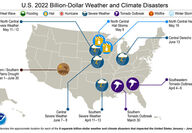
This month I'll start with an interesting research project. The study involved data gathered more than 200 years ago. For the period of 1826 through 1872, citizens in New York state made observations and collecting data on basic natural events. Those early observers used thermometers and rain gauges; they also watched seasonal changes unfold. These citizens documented when certain species of birds arrived, specific trees started to leaf out, when strawberries ripened and when wheat harvests...
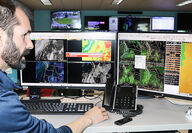
There are some who have what it takes. I'm not talking about outstanding pro athletes, astronauts, or mountaineers. I am talking about weather forecasters. I recently visited the Spokane National Weather Service office and spoke with Steven Van Horn, a forecaster a that office. He has what it takes. Van Horn shared with me the requirements needed to become a weather forecaster. "I went to University of California, Davis to get my bachelor's degree in atmospheric science." He explained that...

Our weather forecasts originate from the National Weather Service. How you get your weather forecast varies a lot. There are numerous weather phone apps. All television and radio stations provide weather forecasts, and there are the all-weather sites on the Internet. The data used is from the National Weather Service. What the weather service produces is in the public domain — it belongs to all of us. Weather Service data, as well as data from the National Oceanic Atmospheric Administration (...

With the wildfires burning in Arizona, New Mexico, and Colorado, one would think we were in summer fire season already. Though, the reality is, it’s mid spring, and fire season is now nearly year-round. In last month’s column, I shared the status of drought for our region. We have not recovered from drought conditions, it’s still here. Looking at the National Integrated Drought Information System, the dryness will continue. For Washington state, the eastern portion is in drought. These condition...

Spring has arrived! We all are feeling the relief from the overcast, damp, and cold winter weather; it’s behind us once again. Spring is here and summer is fast approaching. Some of you may recall this movie quote. A contestant is asked to describe her perfect date. “That’s a tough one. I’d have to say April 25. Because it’s not too hot, not too cold. All you need is a light jacket.” Our mood is affected by the weather. In the field of human psychology, some studies address the association...

We’ve all seen the flash of lightning and heard the aftermath of the lightning bolt — the loud clap of thunder. There are three basic elements needed to form lightning. An unstable atmosphere, moisture, and some type of atmospheric action to get the air moving. Most lightning activity we see occurs during our summer months here in the Coulee. Yet, there have been some occurrences of lightning during the winter too. According to NOAA’s National Severe Storms Laboratory, lightning is one of the o...

The recent eruption of the Tonga volcano was captured by various geostationary satellites showing us the size and scale of that eruption. The eruption plume was about 162 miles in diameter before upper winds disrupted it. The Tonga volcano, officially called the Hunga-Tonga-Hunga-Ha’apai volcano, is mostly under water. It is about 12.5 miles wide and is 6,000 feet high. The volcano is 40 miles north of capital of Tonga (175˚23’W, 20˚33’S). This volcano’s recent past activity was in 2009 and...

Before we visit the final 2021 weather data for our region, a dryer, warmer year, we will explore the subject of drought — something we’ve been experiencing for several months now. When we study weather events like tornadoes, thunderstorms, or hurricanes, we need to add drought as a weather event as well. What makes drought different is its longevity and its beginning and ending periods. Drought is the near total absence of rainwater for a prolonged period of time. Looking at our pre...
In a space of 7 miles Here’s a further perspective. Four communities, or neighborhoods, that have a combined population of 3,378 (current Census), a distance of 7 miles or 15 minutes from the southernmost to the northernmost town. Today, as Scott states, 20 council members and 4 mayors for a population of less than 3,400 people. Each town competes with the others, duplicating efforts for such things as grant dollars for various and important community needs and improvements. Fire protection, ambulance and police needs are contracts or a...

Several interesting research efforts have provided findings about our atmosphere and its content. Here are two that I found to be noteworthy and wanted to share them here. Just last month the Journal of Climate published the work of five climate scientists. Their work addressed historic Northern Hemisphere large concurrent heatwaves driven by changing atmospheric circulations. Remember the heatwave we witnessed in June 2021? Our new all-time high temperature for that month is now at 112˚F. Up...

Meteorological winter starts in less than a month. Meteorologists say winter is the three-month block of December, January and February. Astronomical winter starts Dec. 22. Dependent on which “winter” you choose to start your winter, get ready, because it’s coming. La Niña conditions are in place for this winter. Over at the National Oceanic and Atmospheric Administration (NOAA) they explained what the nation in general might expect. “…La Niña winters tend to be drier and warmer across the...

Together we have experienced another astronomical event, we are now in autumn. Temperatures are falling and many of us are breathing a slight sigh of relief. Wildfire smoke has dissipated, yet we are still in drought. Nationally, our region is in the sixth percentile of Exceptional Drought, also known as “D4.” Areas to our south are still burning. The largest wildfire still active, the Dixie Fire in Northern California, is well over 900,000 acres. Here in Washington state, the Schneider Spr...

Before we examine what scientists are expressing about our upcoming 2021-22 winter, I want to share a recap of 2021 summer weather data. Let’s take it month by month. June — six days over 100˚F, 16 days over 90, high temperature of 113.8˚F and 0.49 inches of precipitation. July — four days over 100, 14 days over 90, high temperature of 104.1 and 0.08 inches of precipitation. August — five days over 100, 10 days over 90, high temperature of 104.1 and 0.42 inches of precipitation. For the three...

Last month we looked at our June heat wave that was created by a heat dome. The drought we are currently in was written about as well. In this column I will take a deeper dive into drought with a look back at historic droughts in the nation. Put your hiking boots on and let’s take a dusty walk back into history and look at droughts from our North American past. Scientists and historians have done the research and have shared their results of major droughts here in the United States. As their r...

Like the air we breathe, electricity, that magical stuff behind the light switch, is taken for granted by a majority of people. Flip a switch, the lights come on. We are dependent on energy 24 hours a day, 7 days a week. As populations continue to grow and their need for more and “cleaner” energy grows too, the demand for more production of it will become central in the not-so-distant future. The production of energy comes in many forms. We’ve been made aware of issues related to some forms...

Back in June 2015, only six years ago, we had a local June high temperature record set at 105˚F. Well, with the onset of a high-pressure system, or heat dome, that sat over us in late June, a new record was established. Fact is, it occurred twice – June 28th and 29th. The high temperature record for June is now 112˚F, just one degree off the official all-time high temperature for our area set 82 years ago, in July 1939 at 113˚F. What caused the heatwave in late June that has intensified the...

As we linger on the dry side of precipitation in our region, it’s prudent to check dedicated weather sources that, as part of their work, speak to near-future weather and wildfire conditions. Let’s start with the Office of Predictive Services at the National Interagency Fire Center in Boise, Idaho. A specific comment is made in the June 1 Wildland Fire Potential Outlook that addresses the Northwest region: “The driest area in the region is the Columbia Basin. Green up is variable or compl...

Climatologists with the National Oceanic and Atmospheric Administration’s office of National Centers for Environmental Information are recalculating the nation’s Climate Normals covering the span of 1991-2020. This process occurs every 30 years. It started in 1935 when the International Meteorological Organization, now called World Meteorological Organization, asked its nation members to calculate “climate normals” using a 30-year period, starting with 1901-1930. For the first time, the update w...

Here I’ve shared how scientists develop forecasts and predictions of our planet’s weather: from ground and airborne observations and data from stationary and orbiting satellites. Those data that are gathered are put through algorithms on computers that help create weather forecasts and predictions. It’s not a perfect science and likely never will be. So, how are scientists gathering data on what weather occurred in the past — way back before people predicted our weather — even before people? Pal...

A portion of the geographic United States, specifically the Southern Plains and Gulf Coast, were hit hard in late February with unusual life-threatening winter weather. The state of Texas became the epicenter of this winter event for several reasons. Widespread power outages, freezing water pipes and significant snowfall occurred, which, in some parts of Texas and the Gulf Coast is a rare happening. What was the cause — the Polar Jet Stream or the Arctic Polar Vortex? First, let’s take a loo...
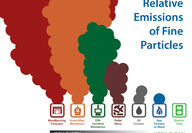
Last month we addressed the general state of air quality monitoring across the nation and more specifically here in the state of Washington and locally. To summarize, the agencies that are charged with the matters of informing their public of air quality issues are lacking. Regrettably, their bureaucratic hands are somewhat inhibited due to funding shortfalls amid other things. Regarding awareness of local air quality, up until the past few years, we simply didn't know what was happening with...
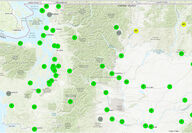
The atmosphere that encircles our planet protects and sustains all living things. The Stratosphere is home to the Ozone layer, some 12 to 25 miles above us, protecting us from solar radiation. The layer we spend our lives in, the lower portion of the Troposphere, provides that sustenance we all need - breathable air. What we breath includes various gases -- about 78 percent nitrogen, 21 percent oxygen, 0.9 percent argon, and 0.1 percent other gases. What happens when human activities and...
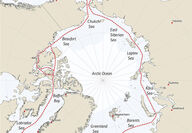
A new study was recently published in the journal Science that chronicles three decades of arctic animal movements. The study is called Arctic Animal Movement Archive. There have been over 200 studies addressing the impacts on 86 species of animals that call the Arctic home. "There's changes everywhere you look – everything is changing," said Dr. Gil Bohrer, an author of the new archive. The culmination of 30 years of studies had been carried out by more than 100 universities, government a...